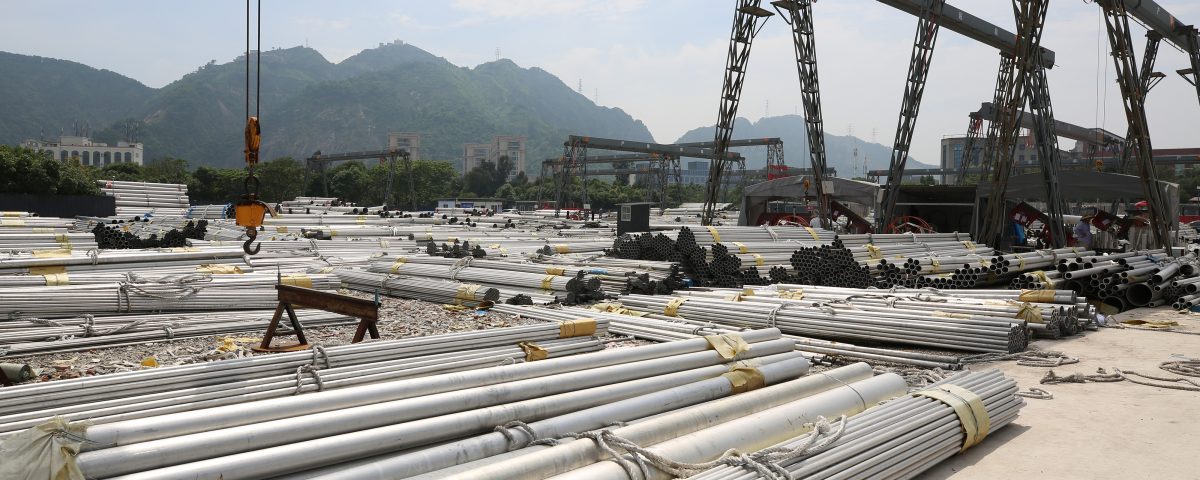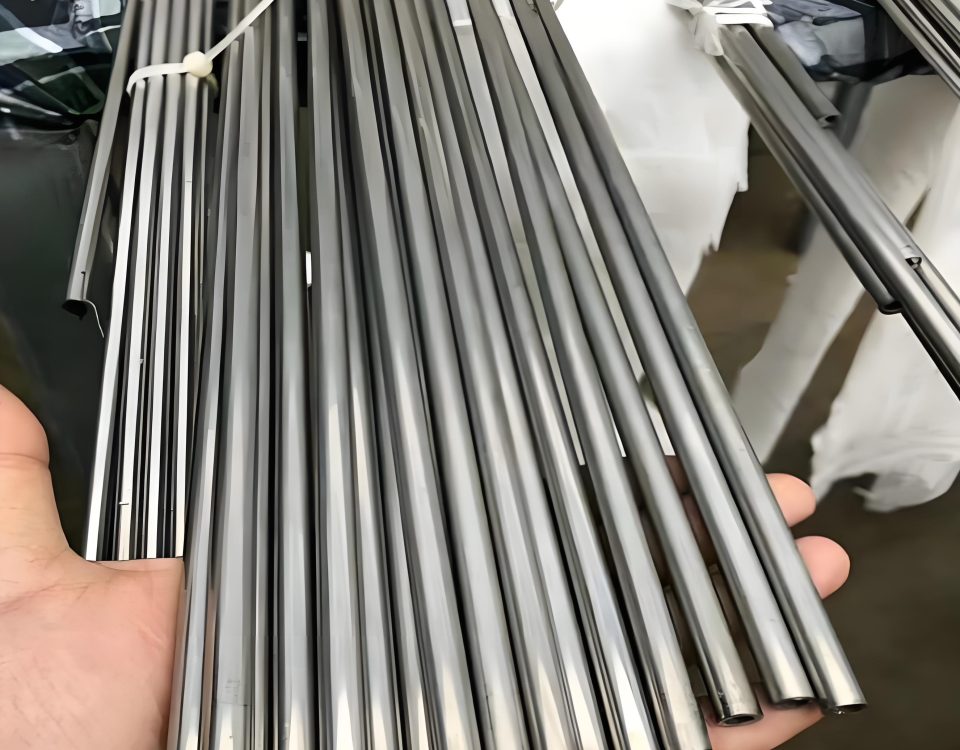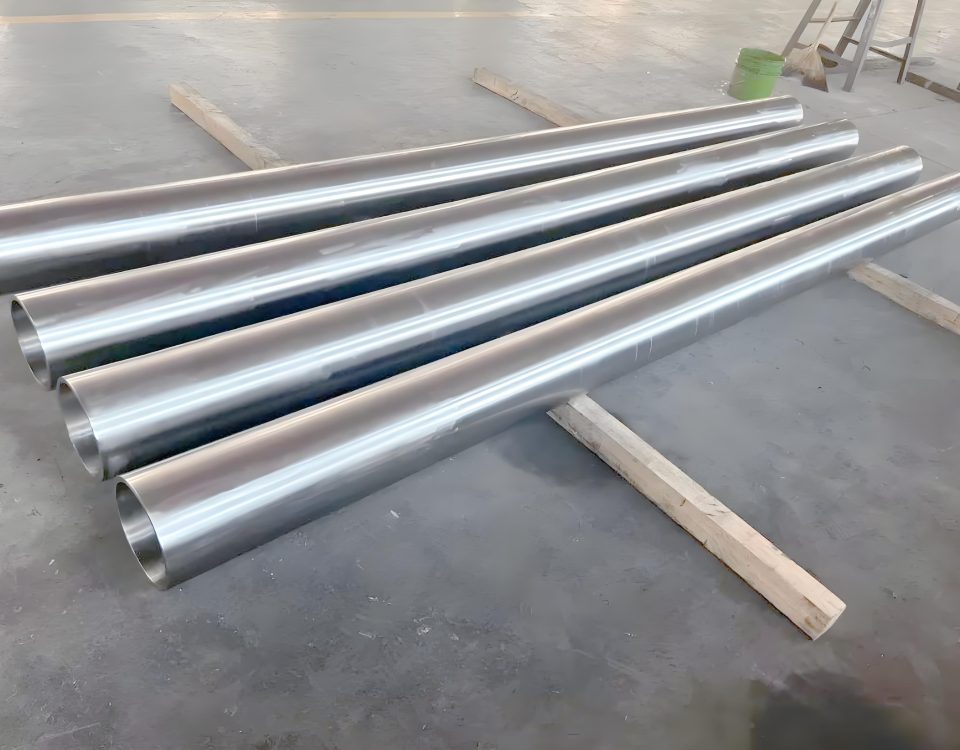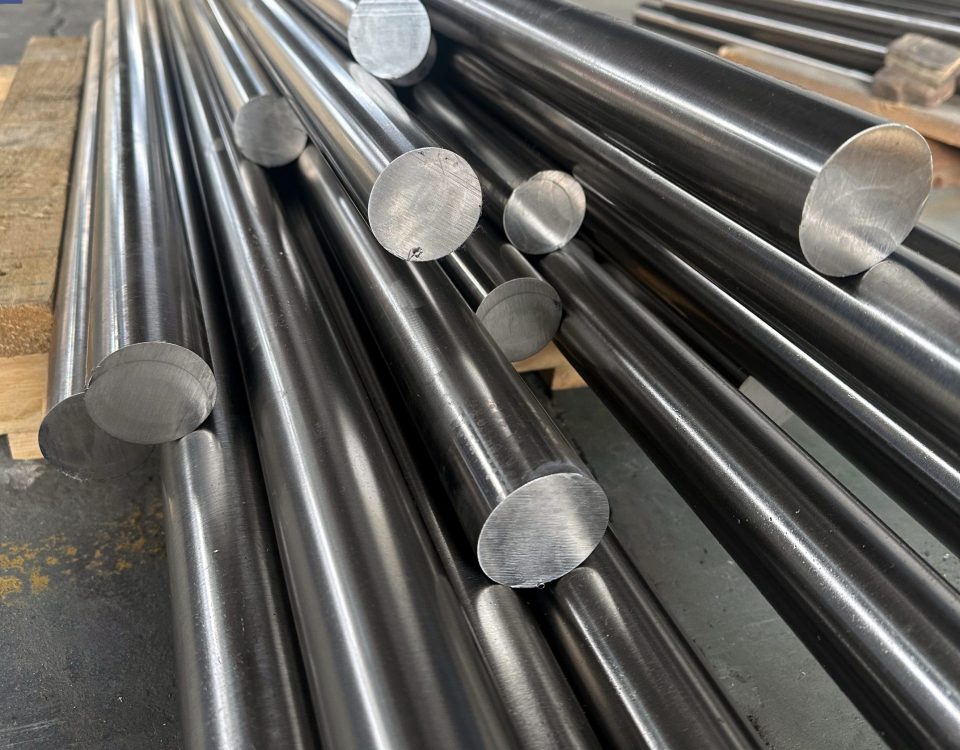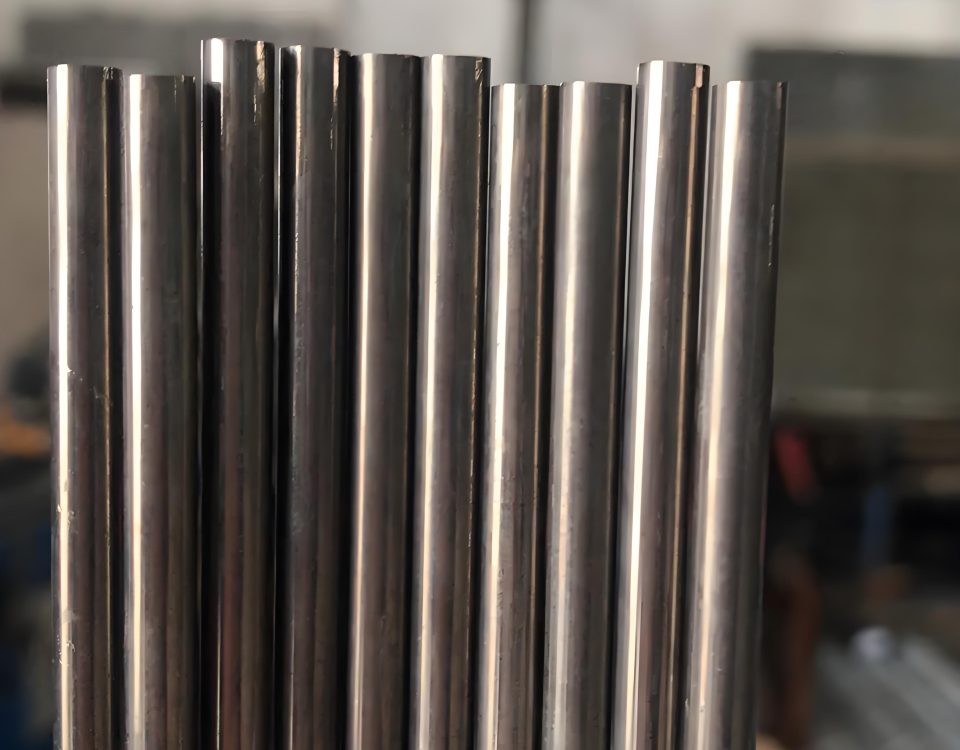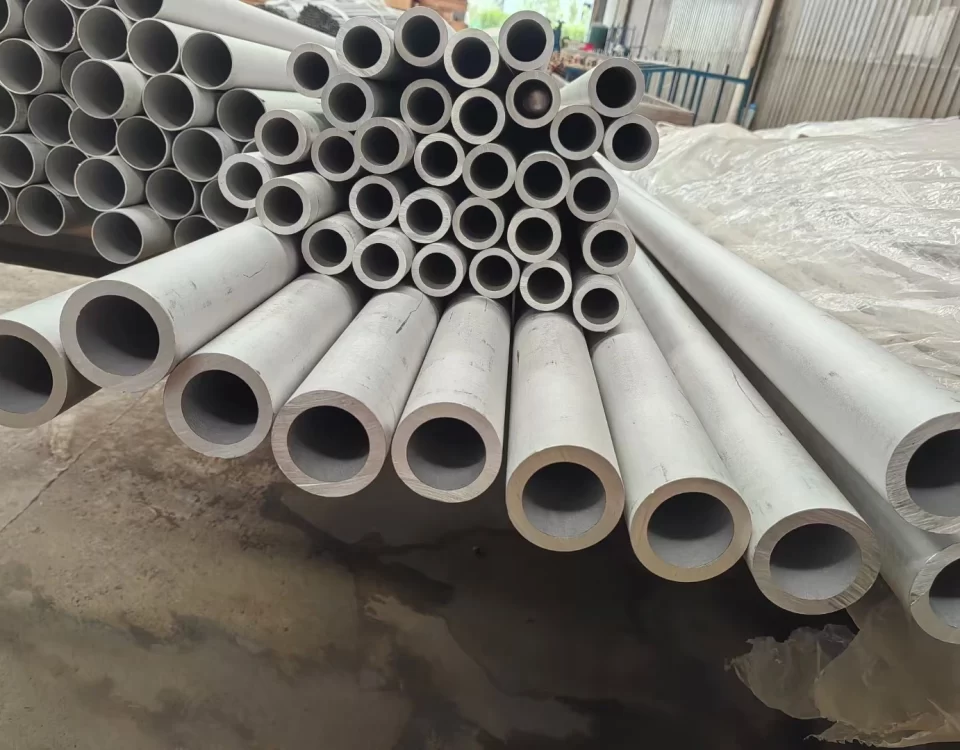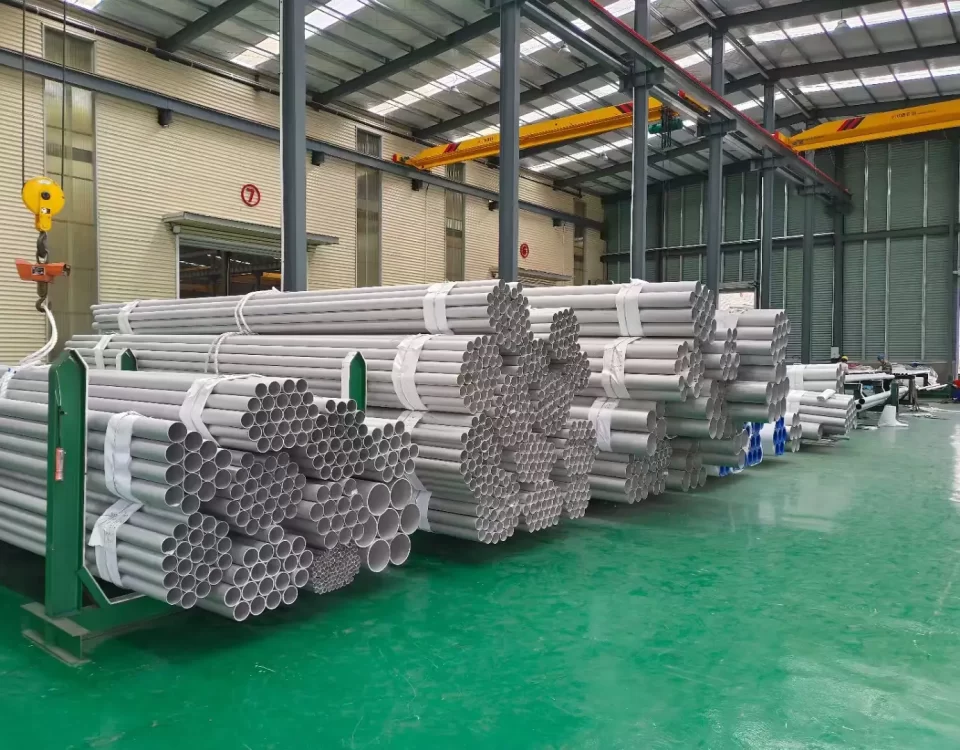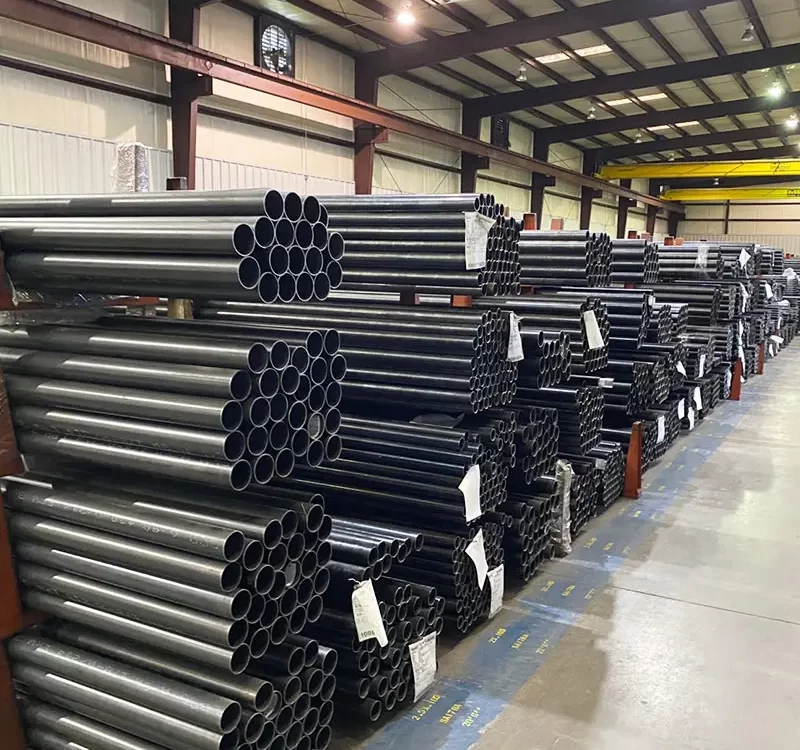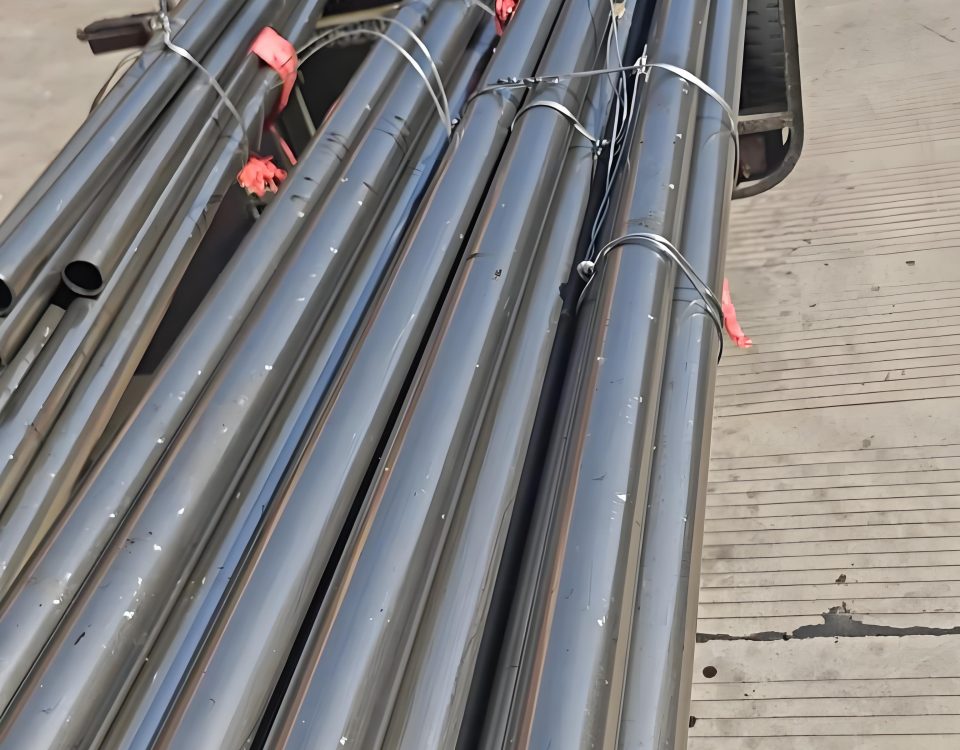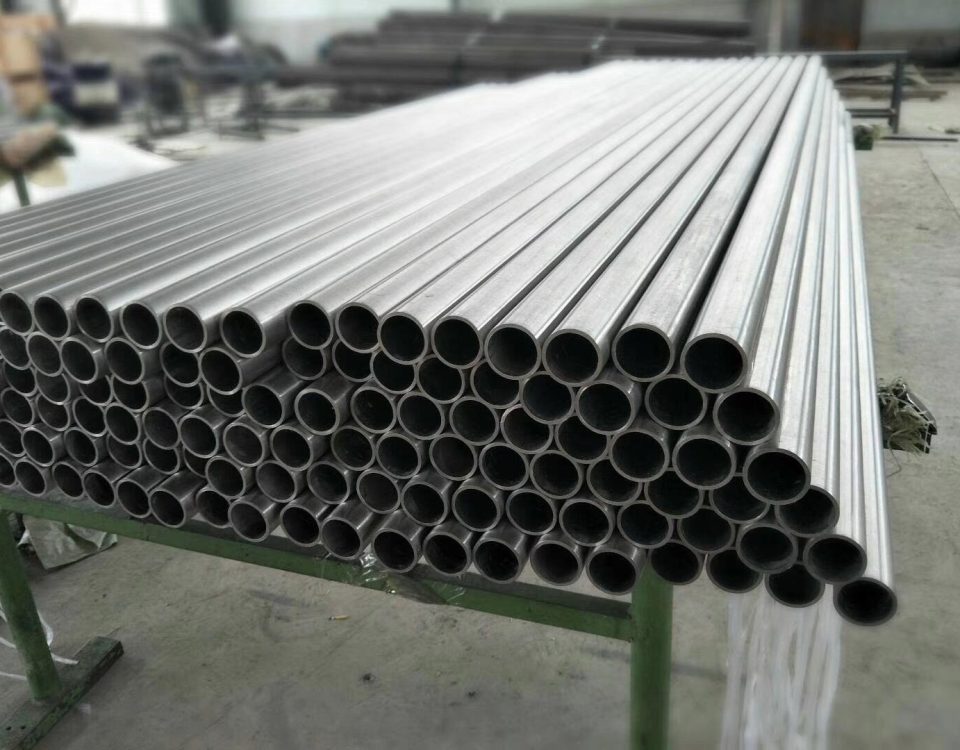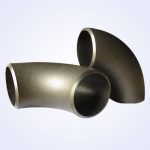
Khuỷu tay đường ống bằng thép carbon dựa trên dòng điện trường từ xa
Tháng chín 20, 2025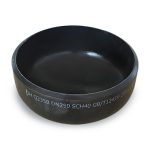
Mũ ống thép carbon
Tháng chín 26, 2025Nền tảng công nghiệp của niken tinh khiết: kền 200 (UNS N02200) Ống hợp kim – Tổng quan toàn diện
Chương i: Giới thiệu Định nghĩa, Tình trạng lịch sử, và giá trị cốt lõi của niken tinh khiết thương mại
1.1 Tầm quan trọng của niken tinh khiết thương mại và nguồn gốc của niken 200
Trong ngày hôm nay, môi trường sản xuất công nghiệp rất chuyên môn và đòi hỏi, Yêu cầu về hiệu suất vật chất mở rộng vượt xa sức mạnh cơ học cơ bản. Khi phải đối mặt với hóa chất tích cực sự ăn mòn, Nhu cầu điện/nhiệt chuyên dụng, và các tiêu chuẩn độ tinh khiết sản phẩm nghiêm ngặt, Các vật liệu kim loại thông thường thường chứng minh không đầy đủ. Chính trong bối cảnh này Hợp kim Niken-Base, cụ thể kền 200 (UNS N02200), nổi tiếng như “Niken tinh khiết về mặt thương mại,” đã thiết lập mình như một nền tảng không thể thiếu cho nhiều quy trình công nghiệp quan trọng, Nhờ sự kết hợp độc đáo của họ giữa độ tinh khiết hóa học cao và các đặc tính nổi bật.
kền 200 không phải là một sự đổi mới mới; Lịch sử của nó dấu vết trở lại những năm 1930, Ban đầu được phát triển bởi Công ty Niken quốc tế cũ (INCO). Nó đại diện cho một trong những hợp kim niken có độ tinh khiết cao nhất có sẵn trên thị trường, thường yêu cầu một nội dung niken của Không ít hơn \(99.0\%\). Độ tinh khiết đặc biệt này kết thúc nó với một tập hợp các đặc điểm vật lý và hóa học duy nhất, đáng chú ý là sự ổn định chưa từng có và khả năng chống ăn mòn trong sự tích cực Media kiềm ăn daVị trí của nó, nó giữ một cách không sử dụng trong lĩnh vực xử lý hóa học quan trọng.
Công ty chúng tôi chuyên về r&D và sản xuất kền 200 / Un n02200 hợp kim niken ống. Là một thành phần quan trọng để truyền chất lỏng, Trao đổi nhiệt, và hỗ trợ cấu trúc, Chất lượng của ống của chúng tôi trực tiếp xác định độ tin cậy và tuổi thọ dịch vụ của toàn bộ hệ thống. Chúng tôi nhận ra rằng sản xuất một niken tuân thủ 200 ống không chỉ đơn thuần là một quá trình tạo hình kim loại; nó là một công việc có hệ thống liên quan đến luyện kim, Gia công chính xác, kiểm tra không phá hủy (NDT), và kiểm soát chất lượng nghiêm ngặt. Chúng tôi cung cấp nhiều hơn chỉ là ống kim loại; Chúng tôi cung cấp một cam kết lâu dài về tính liên tục công nghiệp, Độ tinh khiết của sản phẩm, và an toàn, bắt nguồn từ sự hiểu biết sâu sắc về khoa học vật liệu và sự theo đuổi không khoan nhượng về sự xuất sắc của sản xuất.
1.2 Sự khác biệt kỹ thuật chính: kền 200 vs. kền 201 và ranh giới nhiệt độ
Trước khi đi sâu vào các chi tiết hiệu suất của niken 200, Điều quan trọng là phải làm rõ sự khác biệt đáng kể giữa nó và đối tác carbon thấp hơn của nó, kền 201 (Hoa Kỳ N02201). Sự khác biệt này đại diện cho một tiêu chí kỹ thuật quan trọng cho lựa chọn hợp kim:
- kền 200 (UNS N02200): Hàm lượng carbon được kiểm soát tối đa \(0.15\%\).
- kền 201 (Hoa Kỳ N02201): Hàm lượng carbon được kiểm soát nghiêm ngặt để được phía dưới \(0.02\%\).
Sự khác biệt dường như nhỏ về hàm lượng carbon này dẫn đến sự khác biệt lớn trong hiệu suất ứng dụng: kền 200 dễ bị ảnh hưởng bởi graphitization hoặc nhạy cảm (Kết tủa cacbua giữa các hạt) Khi tiếp xúc với nhiệt độ vượt quá \(315^ Circ Text{C}\) (\(600^ Circ Text{F}\)) trong thời gian dài, làm tăng độ nhạy cảm với sự ăn mòn giữa các hạt. vì thế, **kền 200 chủ yếu được đề xuất bởi các kỹ sư luyện kim cho môi trường dịch vụ bên dưới \(315^ Circ Text{C}\)**.
kền 201 được thiết kế đặc biệt để khắc phục vấn đề nhạy cảm ở nhiệt độ cao này và ** phù hợp cho các môi trường ở trên \(315^ Circ Text{C}\)**, Đảm bảo vật liệu duy trì tính toàn vẹn ăn mòn của nó ở nhiệt độ hoạt động cao. Là một nhà sản xuất ống chuyên nghiệp, Chúng tôi kiểm soát một cách tỉ mỉ thành phần hóa học của nguyên liệu thô và có thể cung cấp linh hoạt cho một trong hai niken 200 hoặc niken 201 Dựa trên các yêu cầu ứng dụng và nhiệt độ hoạt động cụ thể của khách hàng, Đảm bảo lựa chọn vật liệu khoa học và phù hợp.
Chương II: Lặn sâu vào niken 200 Khoa học vật liệu hợp kim: Logic của sự tinh khiết và hiệu suất
2.1 Thành phần hóa học: Độ tinh khiết như là nền tảng của hiệu suất
Giá trị cốt lõi của kền 200 nằm trong độ tinh khiết hóa học của nó. Ma trận niken tinh khiết cao không chỉ đảm bảo khả năng chống ăn mòn tuyệt vời của nó mà còn cung cấp các tính chất vật lý chức năng độc đáo, chẳng hạn như độ dẫn điện cao và sắt từ. Bàn 1 Chi tiết các yêu cầu thành phần hóa học chính được quy định bởi tiêu chuẩn UNS N02200 (Tham khảo ASTM B163/B161), đóng vai trò là điểm chuẩn bắt buộc cho sản xuất ống của chúng tôi:
| Yếu tố | UNS N02200 tiêu chuẩn (ASTM B163/B161) Nội dung tối đa (%) | Ý nghĩa và tác động |
|---|---|---|
| kền (Ni) + Coban (Co) | Min. \(99.00\) | Đảm bảo khả năng chống ăn mòn chính, Độ dẻo cao, độ dẫn điện, và tính chất từ tính. |
| Carbon (C) | Max. \(0.15\) | Ảnh hưởng đến độ nhạy ăn mòn giữa các hạt (sự nhạy cảm) ở nhiệt độ cao. Nội dung C cao là điểm khác biệt chính so với NI 201. |
| Đồng (Cu) | Max. \(0.25\) | Được kiểm soát nghiêm ngặt để tránh thỏa hiệp sự ổn định của niken tinh khiết trong các giải pháp kiềm ăn da. |
| Sắt (Fe) | Max. \(0.40\) | Yếu tố tạp chất, ảnh hưởng đến sự tinh khiết, Độ dẫn điện, và tính chất từ tính. Cao \(\chữ{Fe}\) Nội dung làm giảm độ dẫn điện. |
| Mangan (Mn) | Max. \(0.35\) | Disoxidizer phổ biến, được kiểm soát để duy trì độ tinh khiết và ảnh hưởng đến khả năng hàn. |
| Silicon (Si) | Max. \(0.35\) | Disoxidizer phổ biến, Nội dung quá mức làm giảm độ dẻo. |
| lưu huỳnh (S) | **Max. \(0.01\)** | **Phải cực kỳ thấp. ** Sulfide làm giảm độ bền nhiệt độ cao, tính, và chống ăn mòn, Dễ dàng gây ra sự thiếu hụt nóng. |
| Ống / Ống thép hợp kim liền mạch | Max. \(0.10\) | Kiểm soát tổng số tạp chất còn lại để đảm bảo độ tinh khiết cao tổng thể. |
Bàn 1: Yêu cầu thành phần hóa học cho niken 200 (UNS N02200) Ống hợp kim
2.2 Tính chất vật lý: Cơ sở cho các ứng dụng chức năng
Các tính chất vật lý của hợp kim niken có độ tinh khiết cao làm cho nó trở nên độc đáo trên nhiều lĩnh vực, đặc biệt trong truyền điện và nhiệt động lực học. kền 200 là sắt từ (dưới nhiệt độ curie của nó khoảng \(360^ Circ Text{C}\)) và sở hữu độ dẫn nhiệt và điện cao, một lợi thế mà nhiều siêu hợp sản dựa trên niken khác thiếu.
| Tài sản vật chất | Giá trị điển hình | Đơn vị | Ghi chú |
|---|---|---|---|
| Mật độ | \(8.89\) | \(\chữ{g/cm}^3 ) | Tương đối nặng, phản ánh việc đóng gói mật độ cao của các nguyên tử niken. |
| Phạm vi nóng chảy | \(1435 – 1446\) | \(\chữ{^ Circ Text{C}}\) | Điểm nóng chảy cao, Cho vay độ ổn định nhiệt tốt cho các ứng dụng nhiệt độ cao. |
| Nhiệt độ Curie | \(360\) | \(\chữ{^ Circ Text{C}}\) | Trưng bày tính sắt dưới nhiệt độ này. |
| Hệ số mở rộng nhiệt | \(13.3 \lần 10^{-6}\) | \(\chữ{K}^{-1}\) | Giá trị trung bình giữa \(20^ Circ Text{C}\) và \(100^ Circ Text{C}\). |
| Dẫn nhiệt | \(70.2\) | \(\chữ{W/(m}\cdot\text{K)}\) | Giá trị tại \(21^ Circ Text{C}\). Tốt hơn thép không gỉ và nhiều hợp kim NI-CR, có lợi cho trao đổi nhiệt. |
| Độ dẫn điện | \(\khoảng 15 – 20\) | \(\%\) IAC | Cao hơn đáng kể so với hầu hết các hợp kim niken, tiếp cận độ dẫn của đồng, Lý tưởng cho các ứng dụng điện tử. |
| Mô đun đàn hồi | \(205\) | \(\chữ{GPa}\) | Phản ánh độ cứng của vật liệu, Có thể so sánh với thép. |
Bàn 2: Tính chất vật lý điển hình của niken 200 Ống hợp kim
2.3 Tính chất cơ học: Tùy chỉnh thông qua công việc lạnh và ủ
Là một niken tinh khiết về mặt thương mại, kền 200 Tính năng xuất sắc độ dẻo và đặc điểm làm việc lạnh tốt, giúp bạn dễ dàng thực hiện bản vẽ và lăn lạnh chính xác, ống chính xác cao. Các tính chất cơ học cuối cùng của ống phụ thuộc phần lớn vào điều trị nhiệt cuối cùng của nó (ví dụ., tình trạng ủ hoặc lạnh).
Bàn 3 Liệt kê các mục tiêu thuộc tính cơ học chung cho ** ủ ** niken 200 ống, Các tham số phải được xác minh thông qua kiểm tra độ bền kéo trong hệ thống kiểm soát chất lượng của chúng tôi:
| Bất động sản cơ khí | Ủ hóa giá trị điển hình | Đơn vị | ASTM B163 Yêu cầu tối thiểu (Min.) |
|---|---|---|---|
| Độ bền kéo | \(400 – 550\) | \(\chữ{MPa}\) | \(380\) |
| Mang lại sức mạnh (0.2% Bù lại) | \(105 – 200\) | \(\chữ{MPa}\) | \(105\) |
| Kéo dài | \(45 – 60\) | \(\%\) | \(35\) |
| Rockwell độ cứng | \(60 – 75\) | \(\chữ{HRB}\) | – |
Bàn 3: Mục tiêu tài sản cơ khí cho niken 200 Ống hợp kim (Điều kiện ủ)
Thông qua kiểm soát chính xác tỷ lệ giảm làm việc lạnh và quá trình ủ tiếp theo, Chúng ta có thể điều chỉnh trận chung kết ống tính khí. Ví dụ:, Các Lạnh rút ra điều kiện có thể tăng đáng kể sức mạnh năng suất của nó (tối đa \(450 \chữ{MPa}\) hoặc hơn) với chi phí của một số độ dẻo, làm cho nó phù hợp cho các ứng dụng yêu cầu sức mạnh cấu trúc cao hơn. Khả năng chính xác này để điều chỉnh các tính chất cơ học cuối cùng làm nổi bật chuyên môn về sản xuất ống của chúng tôi.
Chương III: Đi sâu sâu vào khả năng chống ăn mòn vượt trội của niken 200
3.1 Các “Vua ăn mòn” Trong môi trường kiềm ăn da: Năng lực cốt lõi
kền 200 kiếm được danh tiếng của nó là “Vua ăn mòn” chủ yếu từ khả năng chống ăn mòn chưa từng có của nó trong Kiềm ăn da chẳng hạn như natri hydroxit (\(\chữ{NaOH}\)) và kali hydroxit (\(\chữ{Koh}\)). Những hóa chất tích cực này, Ngay cả ở nồng độ và nhiệt độ cao, Tấn công nghiêm trọng hầu hết các loại thép không gỉ và hợp kim Iron-crom.
Cơ chế chống ăn mòn niken 200: Bề mặt của niken nhanh chóng tạo thành một mỏng, dày đặc, và rất ổn định Phim oxit thụ động (\(\chữ{Nio}\)). Màng oxit này trơ hóa học và cực kỳ ổn định trong các dung dịch kiềm mạnh. Nó phân lập hiệu quả chất nền kim loại từ môi trường ăn mòn, Cung cấp vượt trội, Bảo vệ ăn mòn lâu dài. Sự ổn định của bộ phim thụ động này là yếu tố quan trọng cho phép niken 200 để vượt trội hơn các hợp kim khác.
- Soda ăn da (\(\chữ{NaOH}\)) Ứng dụng: kền 200 thể hiện hiệu suất tuyệt vời ở hầu hết các nồng độ và nhiệt độ của \(\chữ{NaOH}\) giải pháp. Trong ngành công nghiệp clor-kiềm, nơi nước bị bay hơi để cô đặc \(\chữ{NaOH}\), kền 200 Ống là vật liệu ** tiêu chuẩn được lựa chọn ** cho ống sưởi và thiết bị bay hơi, đảm bảo tuổi thọ thiết bị lâu dài và sự tinh khiết của \(\chữ{NaOH}\) sản phẩm.
- **Nhắc lại các giới hạn nhiệt độ cao:** Các \(315^ Circ Text{C}\) Giới hạn nhiệt độ là rất quan trọng. Đối với dịch vụ ăn da nhiệt độ cao trên ngưỡng này, Chúng tôi ** đề xuất mạnh mẽ ** sử dụng carbon cực thấp kền 201 để giảm thiểu nguy cơ nhạy cảm và đảm bảo an toàn cho hoạt động lâu dài.
3.2 Hành vi phức tạp trong môi trường axit và môi trường nước
Khả năng kháng axit niken 200 có chọn lọc và phụ thuộc nhiều vào loại axit và trạng thái oxy hóa của dung dịch:
- **Giảm axit:** Trong không oxy hóa và khử aerated dung dịch axit clohydric (\(\chữ{HCl}\)) và axit sunfuric (\(\chữ{H}_2 văn bản{VÌ THẾ}_4 )), kền 200 Sở hữu một số dung sai. Tình trạng nguy kịch là không đồng nhất. Sự hiện diện của một lượng oxy hoặc tác nhân oxy hóa (giống như \(\chữ{Fe}^{3+}\) ion) sẽ phá vỡ bộ phim thụ động được hình thành trong môi trường giảm, gây ra sự gia tăng mạnh về tốc độ ăn mòn.
- **Axit oxy hóa:** kền 200 **là không phù hợp ** đối với các axit oxy hóa mạnh như axit nitric (\(\chữ{HNO}_3\)) hoặc axit sunfuric đậm đặc. Trong các phương tiện truyền thông này, Tốc độ ăn mòn cao. CR hoặc MO cao hơn chứa hợp kim (giống như \(\chữ{Inconel}\) hoặc \(\chữ{Hastelloy}\) loạt) thường được yêu cầu ở đây.
- **Môi trường nước và nước muối:** Trong dung dịch muối trung tính và kiềm, cũng như nước ngọt đứng yên hoặc vận tốc thấp, Kháng ăn mòn là tốt. Tuy nhiên, trong nước biển có tốc độ cao hoặc ở các khu vực trì trệ với tiền gửi, nguy cơ của rỗ và Ăn mòn kẽ hở tăng. Đối với các ứng dụng yêu cầu kháng nước biển tốt hơn, Hợp kim có điện trở cao hơn với các ion clorua, giống như \(\chữ{Ni-Cu}\) Sê -ri Hợp kim (\(\chữ{Monel 400}\)), thường được chọn.
3.3 Khả năng chống khí halogen khô và quá trình oxy hóa nhiệt độ cao
- **Halogen khô:** Ở nhiệt độ cao, kền 200 cho thấy khả năng chống ăn mòn tốt trong khí halogen khô như clo (\(\chữ{Cl}_2\)) và fluorine (\(\chữ{F}_2\)). Tuy nhiên, Điều này đòi hỏi bầu không khí phải ** hoàn toàn khô ráo **, Khi sự hiện diện của độ ẩm tăng tốc đáng kể phản ứng ăn mòn.
- **Quá trình oxy hóa nhiệt độ cao:** Khô, không khí oxy hóa, Niken 200 kháng với quá trình oxy hóa là tốt, có thể sử dụng được cho đến khoảng \(1200^ Circ Text{C}\). Tuy nhiên, Nếu môi trường giới thiệu ** Hợp chất lưu huỳnh ** hoặc ** Giảm khí **, Hiệu suất nhiệt độ cao của vật liệu dựa trên niken bị tổn hại nghiêm trọng. Niken phản ứng với lưu huỳnh để tạo thành sunfua niken điểm cảm động thấp, có khả năng dẫn đến ** độ ngắn nóng **.
Chương IV: Hệ thống đảm bảo chất lượng và sản xuất chính xác cho niken 200 ống
4.1 Quy trình sản xuất: Từ phôi đến ống liền mạch có độ chính xác cao
Công ty chúng tôi cam kết sản xuất chất lượng cao kền 200 Ống liền mạch và hàn. Ống liền mạch, Do tính đồng nhất độ dày tường vượt trội của chúng, tính toàn vẹn cấu trúc cao hơn, và khả năng chịu áp lực, là lựa chọn lý tưởng cho áp lực tới hạn và các ứng dụng nhiệt độ cao.
4.1.1 Sản xuất ống liền mạch: Nghệ thuật làm việc lạnh
Chế tạo \(\chữ{kền 200}\) ống liền mạch là một phức tạp, Quá trình làm việc lạnh nhiều bước đòi hỏi chính xác cực cao:
- **Chuẩn bị và phân tích nguyên liệu thô:** Bắt đầu với phôi tròn vững chắc (Phôi) đã được phân tích và phân tích nghiêm ngặt, Gặp gỡ \(\chữ{UNS N02200}\) yêu cầu. Đây là bước đầu tiên để đảm bảo độ tinh khiết của sản phẩm.
- **Xỏ/đùn nóng:** Phôi rắn được làm nóng và xoay vòng hoặc được xử lý thông qua việc ép đùn để tạo ra vỏ có thành dày ban đầu.
- **Vẽ lạnh hoặc lăn lạnh:** Đây là bước ** Bước cốt lõi ** để sản xuất Niken chính xác 200 ống. Thông qua các chu kỳ vẽ/lăn lạnh lặp đi lặp lại, Ống giảm dần đường kính và độ dày thành. Quá trình này cải thiện đáng kể độ chính xác bề mặt và chiều.
- **Ủ trung gian và cuối cùng:** Vì niken 200 cứng lại nhanh chóng trong quá trình làm việc lạnh, ủ trung gian và cuối cùng là rất cần thiết. **Mục đích:** Để khôi phục độ dẻo của kim loại, làm giảm căng thẳng nội bộ, và cho phép ống được xử lý hoặc đưa đến trạng thái làm mềm yêu cầu cuối cùng của nó. **Yêu cầu chính:** Ủ phải được thực hiện trong không khí trơ hoặc hydro được kiểm soát nghiêm ngặt ** ** (ví dụ., **Ủ sáng, Ba **) để ngăn chặn quá trình oxy hóa bề mặt và duy trì một, Kết thúc ánh sáng cao.
- **Hoàn thiện và xử lý bề mặt:** Sau khi kích thước cuối cùng, Các ống trải qua quá trình đánh bóng cơ khí hoặc cơ học/hóa học để loại bỏ bất kỳ oxit và chất gây ô nhiễm bề mặt còn lại, Đạt được hoàn thiện bề mặt mịn (\(\chữ{Ra}\) giá trị) yêu cầu của khách hàng.
4.1.2 Sản xuất ống hàn: Phản ứng tổng hợp độ tinh khiết cao
Ống hàn được hình thành bằng cách lăn niken cao 200 dải thành hình ống và sau đó sử dụng một Hàn hồ quang vonfram liên tục (\(\chữ{GTAW / TURN}\)) xử lý để hợp nhất đường may theo chiều dọc với độ tinh khiết cao. Các ống hàn thường trải qua công việc lạnh tiếp theo và ủ để loại bỏ các ứng suất hàn và cải thiện kích thước hình học. Chúng phù hợp với áp lực không cao, Chuyển chất lỏng không quan trọng do hiệu quả chi phí và tính linh hoạt của chúng.
4.2 Kiểm soát chất lượng nghiêm ngặt và thử nghiệm không phá hủy (NDT) Hệ thống
Cho \(\chữ{kền 200}\) ống được sử dụng trong quan trọng, môi trường hung hăng, Một hệ thống kiểm soát chất lượng mạnh mẽ là Lifeline đảm bảo độ tin cậy của sản phẩm. Hệ thống chất lượng của chúng tôi tuân thủ nghiêm ngặt \(\chữ{TIÊU CHUẨN ISO 9001}\) and fully complies with international standards such as $\text{ASTM}$, $\text{ASME}$, và $\text{PED}$.
| Mục kiểm tra | Phương pháp | Mục tiêu QC |
|---|---|---|
| **Thành phần hóa học ** | Quang phổ, Hóa học ướt | Đảm bảo \(\chữ{Ni} \GE 99.0\%\) Và những tạp chất đó như \(\chữ{C}\) và \(\chữ{Fe}\) gặp \(\chữ{UNS N02200}\) tiêu chuẩn. Đây là điểm kiểm tra quan trọng đầu tiên. |
| **Kích thước hình học ** | Cmm, Đo lường laser chính xác | Kiểm soát nghiêm ngặt đối với OD, bức tường dày (WT), ovality, thẳng, và dung sai chiều dài. |
| **Khiếm khuyết bề mặt ** | Kiểm tra trực quan, Thử nghiệm thâm nhập chất lỏng (PT) | Kiểm tra các vết nứt, vết trầy xước, nếp gấp, và phân tách để đảm bảo tính toàn vẹn bề mặt. |
| **Khiếm khuyết nội bộ ** | Kiểm tra siêu âm (OUT), Kiểm tra dòng điện xoáy (Et) | Phát hiện các vùi bên trong, khoảng trống, Thiếu sự thâm nhập hàn, và những sai sót ẩn khác, đảm bảo âm thanh cấu trúc. |
| **Tính toàn vẹn áp lực ** | Kiểm tra thủy tĩnh, Thử nghiệm khí nén | Xác minh tính toàn vẹn cấu trúc và độ rò rỉ dưới áp lực bên trong được chỉ định, phương pháp điều trị cho các ứng dụng tàu áp suất. |
| **Tính chất cơ học ** | Thử nghiệm độ bền kéo, Dẹt thử nghiệm, Kiểm tra độ cứng | Xác minh rằng độ bền kéo, sức mạnh năng suất, ly giác, và độ dẻo đáp ứng các yêu cầu tiêu chuẩn và nhu cầu tùy chỉnh. |
| **Ăn mòn giữa các hạt ** | Thử nghiệm ăn mòn giữa các hạt (ví dụ., ASTM A262 Thực hành C) | Đảm bảo không có sự nhạy cảm nào xảy ra ở các vùng bị ảnh hưởng bởi nhiệt sau khi ủ hoặc hàn; đặc biệt quan trọng cho \(\chữ{Ni} 201\). |
Bàn 4: Kiểm soát chất lượng chính và các mặt hàng thử nghiệm không phá hủy cho niken 200 ống
Chúng tôi cung cấp toàn diện Báo cáo thử nghiệm vật liệu (Mtrs) Đối với mỗi lô ống, bao gồm $3.1$ hoặc \(3.2\) Giấy chứng nhận (certified by independent third-party inspection agencies like $\text{TUV/SGS}$ theo yêu cầu), đảm bảo Truy xuất nguồn gốc đầy đủ Từ nguyên liệu thô đến sản phẩm cuối cùng. Đây là một cam kết nghiêm túc đối với các khách hàng cao cấp toàn cầu của chúng tôi.
Chương v: Các ứng dụng công nghiệp chính và cân nhắc kinh tế của niken 200 ống
5.1 Ngành công nghiệp hóa chất và hóa dầu: Trái tim của việc xử lý ăn da
Đây là thị trường chính và quan trọng nhất cho niken 200, tập trung vào khả năng kháng cao với kiềm ăn da:
- **Sản xuất soda ăn da:** **Các gói ống bay hơi:** Trong ngành công nghiệp clor-kiềm, tập trung \(\chữ{NaOH}\) Giải pháp là một bước cốt lõi liên quan đến sự bay hơi ở nhiệt độ cao. kền 200/201 ống, do chúng vô song \(\chữ{NaOH}\) chống ăn mòn, được sử dụng rộng rãi để sản xuất ống sưởi và thiết bị bay hơi, đảm bảo tuổi thọ thiết bị lâu dài và sự tinh khiết của \(\chữ{NaOH}\) sản phẩm. **Trao đổi nhiệt và lò phản ứng:** Đường ống và thiết bị để chuyển và xử lý các hóa chất kiềm tập trung cao khác, nhu la \(\chữ{Koh}\).
- **Xử lý hữu cơ:** kền 200 Chống lại sự ăn mòn nhẹ trong khi ngăn ngừa ô nhiễm ion kim loại khi chế biến các hóa chất hữu cơ như axit béo, phenol, và metanol, hoặc trong các quá trình tinh chế dầu khí như khử lưu huỳnh nhựa.
5.2 Điện tử và ngành điện: Chuỗi giá trị của độ dẫn cao
Độ dẫn điện cao là yếu tố chính cho phép vai trò của Niken 200 trong lĩnh vực điện tử, làm cho nó trở thành một vật liệu dẫn điện hiệu suất cao:
- **Kết nối và vỏ pin lithium/điện:** Trong pin lithium-ion hoặc NI-CD công suất cao, kền 200 ống (hoặc giấy bạc) được sử dụng làm khách hàng tiềm năng, Vỏ pin, hoặc đầu nối nội bộ, Tận dụng điện trở thấp của họ và khả năng hàn tuyệt vời để truyền dòng điện đáng tin cậy.
- **Thiết bị điện hóa và các yếu tố sưởi ấm:** kền 200 được sử dụng làm hỗ trợ cấu trúc hoặc các thành phần phát điện tử trong ống chân không, Ống tia catốt, và điện trở chính xác, tận dụng tốc độ bay hơi thấp của nó, Điểm nóng chảy cao, và độ dẫn tốt.
5.3 Xử lý thực phẩm và ngành công nghiệp dược phẩm: Nhu cầu cuối cùng về độ tinh khiết
Trong các ngành công nghiệp liên quan đến sức khỏe, Các sản phẩm ăn mòn vật liệu phải cực kỳ thấp để ngăn ngừa ô nhiễm:
- **Thiết bị cấp thực phẩm:** Các bộ trao đổi đường ống và nhiệt được sử dụng để xử lý axit béo, Glycerin, và nước có độ tinh khiết cao. Ổn định hóa học Niken 200 đảm bảo độ tinh khiết của sản phẩm thực phẩm cuối cùng, meeting standards like $\text{FDA}$ và $\text{USP}$.
- **Tổng hợp dược phẩm:** Trong tổng hợp thuốc cụ thể, chưng cất, và quá trình kết tinh, kền 200 ống được sử dụng trong lò phản ứng và hệ thống chuyển để tránh ô nhiễm ion kim loại, Bảo vệ các chất xúc tác nhạy cảm và sản phẩm cuối cùng.
5.4 Cân nhắc kinh tế: Tổng chi phí vòng đời (TLC) Lợi thế
Mặc dù chi phí mua sắm ban đầu của hợp kim niken như niken 200 cao hơn thép không gỉ tiêu chuẩn, nó cung cấp một cấp trên Tổng chi phí vòng đời (\(\chữ{TLC}\)) Lợi thế trong điều kiện dịch vụ tích cực:
- **Giảm thiểu thời gian chết:** Trong ngành công nghiệp kiềm ăn da, Bất kỳ sự cố ăn mòn thiết bị bất ngờ nào cũng dẫn đến thời gian chết và mất sản xuất tốn kém. Cuộc sống dịch vụ cực kỳ dài của Niken 200 có nghĩa là giảm đáng kể tần suất bảo trì và thay thế, mang lại lợi ích kinh tế vượt xa chi phí nguyên liệu ban đầu.
- **Duy trì hiệu quả sản xuất:** Độ dẫn nhiệt vượt trội của nó và khả năng chống phạm lỗi (đặc biệt là trong sự tập trung cao \(\chữ{NaOH}\) thiết bị bay hơi) Giúp duy trì hiệu quả trao đổi nhiệt cao theo thời gian, do đó giảm tiêu thụ năng lượng và chi phí hoạt động.
- **Giảm nguy cơ ô nhiễm:** Trong các ngành công nghiệp tinh khiết cao, Một trường hợp ô nhiễm duy nhất có thể làm hỏng toàn bộ lô, dẫn đến tổn thất kinh tế lớn. kền 200 đảm bảo sự sạch sẽ của quy trình sản xuất và sự ổn định của chất lượng sản phẩm, ngăn chặn chi phí ẩn.
Chương Chúng tôi: Hướng dẫn chế tạo cho niken 200 ống: Bản chất của thực hành kỹ thuật
6.1 Thủ tục hàn: Đảm bảo tính tinh khiết và toàn vẹn
kền 200 trưng bày khả năng hàn tốt, Nhưng các thủ tục nghiêm ngặt phải được tuân theo để ngăn ngừa ô nhiễm, Vết nứt nóng, và sự nhạy cảm ở nhiệt độ cao:
- **Sạch sẽ:** **Đây là quy tắc hồng y ** để hàn hợp kim niken. Bề mặt ống và vát khớp phải được làm sạch hoàn toàn bằng bàn chải và dung môi bằng thép không gỉ trước khi hàn để loại bỏ tất cả dầu, tỉ lệ, sơn, và dấu hiệu (đặc biệt). Hợp kim niken rất dễ bị ảnh hưởng bởi các tạp chất có máu thấp như lưu huỳnh và phốt pho, mà dễ dàng gây ra ** cracking nóng **.
- **Phương pháp hàn:** Khuyến nghị sử dụng ** Hàn hồ quang Vonfram Gas (\(\chữ{GTAW / TURN}\))** hoặc \(\chữ{MiG/GMAW}\). Những phương pháp này cung cấp che chắn khí trơ, giảm thiểu quá trình oxy hóa và nitrid hóa trong vùng hàn.
- **Kim loại phụ:** Các kim loại phụ được khuyến nghị nhất cho \(\chữ{Ni} 200\) ống là **\(\chữ{Đất}-1\) (AWS A5.14)** hoặc **\(\chữ{Ni} 208\)**. Chọn kim loại phụ thích hợp là rất quan trọng để đảm bảo mối hàn có khả năng chống ăn mòn và cường độ cơ học phù hợp với kim loại cơ bản.
- **Ủ giảm căng thẳng sau hàn:** Nếu ống đã trải qua công việc lạnh đáng kể trước khi hàn, hoặc nếu có nồng độ căng thẳng cao trong khu vực hàn, **Ủ giảm căng thẳng sau hàn ** có thể được xem xét. Điều này làm giảm ứng suất kéo còn lại, ngăn chặn hiệu quả ** vết nứt ăn mòn căng thẳng (\(\chữ{SCC}\))** Trong các phương tiện cụ thể như kiềm caustic nóng.
6.2 Hướng dẫn gia công và hình thành lạnh
Do độ dẻo cao của Niken 200 và tốc độ làm cứng công việc tương đối nhanh, Các biện pháp phòng ngừa đặc biệt phải được thực hiện trong quá trình gia công và hình thành lạnh:
- **Gia công:** kền 200 có phần dính và có xu hướng gắn bó với các công cụ cắt. Điều này yêu cầu sử dụng các tham số cắt đặc trưng bởi ** công suất cao, tốc độ thấp, và tỷ lệ thức ăn cao **. Sử dụng sắc nét, tích cực rủ, Công cụ cacbua cường độ cao, kết hợp với chất lỏng cắt rộng rãi để làm mát và bôi trơn đầy đủ.
- **Tạo hình nguội:** Độ dẻo tuyệt vời của Nickel 200 giúp bạn dễ dàng thực hiện các hoạt động hình thành lạnh như uốn cong, bùng lên, và lắc lư. Tuy nhiên, bởi vì nó ** làm việc cứng nhanh **, Đối với các yêu cầu biến dạng lớn (ví dụ., U-uốn cong, vẽ sâu), Có thể cần phải thực hiện một hoặc nhiều phương pháp điều trị trung gian **.
Chương VII: Tuân thủ tiêu chuẩn, Dịch vụ tùy chỉnh, và cam kết của công ty chúng tôi
7.1 Tiêu chuẩn quốc tế và tuân thủ đặc điểm kỹ thuật
Niken sản xuất của chúng tôi 200 / UNS N02200 ống tuân thủ nghiêm ngặt các tiêu chuẩn và thông số kỹ thuật công nghiệp lớn của thế giới. Tuân thủ các tiêu chuẩn này không chỉ là điều kiện tiên quyết để tiếp cận thị trường mà còn là một minh chứng cho cam kết của chúng tôi về chất lượng sản phẩm.
| Tên tiêu chuẩn | Sự miêu tả | Mẫu sản phẩm áp dụng |
|---|---|---|
| **ASTM B161 ** | Ống và ống liền mạch niken | Ứng dụng đường ống dày, Phạm vi kích thước rộng. |
| **ASTM B163 ** | Ống niken liền mạch cho bình ngưng và bộ trao đổi nhiệt | Các ứng dụng trao đổi nhiệt có thành mỏng, Độ chính xác cao cần thiết. |
| **Asme SB-161 ** | Tương ứng với ASTM B161 cho mã nồi hơi và áp lực | Tàu áp lực và đường ống, Yêu cầu tuân thủ chứng nhận an toàn. |
| **Asme SB-163 ** | Tương ứng với ASTM B163 cho mã nồi hơi và áp suất | Ứng dụng trao đổi nhiệt áp suất, Yêu cầu tuân thủ chứng nhận an toàn. |
| **DIN / EN 2.4066** | Chỉ định vật liệu tiêu chuẩn châu Âu cho NI 200 | Các ứng dụng thị trường và dự án châu Âu. |
Bàn 5: Tiêu chuẩn quốc tế áp dụng chính cho niken 200 Ống hợp kim
Our company possesses a complete quality management system capable of issuing Material Certificates compliant with $\text{EN 10204 3.1}$, Và chúng tôi có thể phối hợp với khách hàng để có được chứng nhận từ ** các cơ quan kiểm tra bên thứ ba (\(3.2\)) ** Để đảm bảo khả năng sử dụng toàn cầu và độ tin cậy của các sản phẩm của chúng tôi.
7.2 Dịch vụ tùy chỉnh giải quyết các nhu cầu dành riêng cho khách hàng
Chúng tôi hiểu sâu rằng các ống đặc tả tiêu chuẩn thường không thể đáp ứng các yêu cầu của tất cả các điều kiện hoạt động quan trọng. vì thế, Chúng tôi cung cấp các dịch vụ sản xuất tùy chỉnh cao, Làm việc chặt chẽ với khách hàng để giải quyết các thách thức kỹ thuật:
- **Tùy chỉnh cực độ về kích thước và dung sai:** Chúng tôi có thể sản xuất các ống từ ống nhỏ đến ống dẫn nhỏ, với độ dày và chiều dài tường khác nhau, và thắt chặt dung sai cho các dự án cụ thể để đáp ứng nhu cầu cài đặt chính xác cao.
- **Điều kiện tính khí đặc biệt:** Dựa trên nhu cầu chính xác của khách hàng về sức mạnh, độ cứng, và độ dẻo, Chúng tôi cung cấp các điều kiện nóng tính khác nhau thông qua các quy trình xử lý nhiệt tùy chỉnh, bao gồm đầy đủ ** ủ **, **Ánh sáng lạnh **, hoặc ** bị lạnh nặng ** trạng thái.
Chương VIII: Phần mở rộng luyện kim: vi, Phân tích thất bại, và các ứng dụng siêu chính xác
8.1 Cấu trúc vi mô và logic hiệu suất của niken 200 hợp kim
Từ góc độ kính hiển vi, kền 200 là một dung dịch rắn một pha được đặc trưng bởi khối tập trung vào khuôn mặt ** (\(\chữ{FCC}\)) Cấu trúc tinh thể **.
- **Cấu trúc và độ dẻo của FCC:** Các \(\chữ{FCC}\) Cấu trúc sở hữu nhiều \(\chữ{Hệ thống trượt}\), đó là lý do cơ bản cho \(\chữ{kền 200}\)Độ dẻo và độ dẻo dai tuyệt vời. Nó cho phép vật liệu trải qua biến dạng dẻo thông qua chuyển động trật khớp dưới các chủng lớn mà không bị gãy giòn ngay lập tức.
- **Cơ chế làm việc cứng:** Làm việc lạnh (chẳng hạn như vẽ lạnh) giới thiệu một số lượng lớn ** trật khớp ** vào \(\chữ{FCC}\) mạng. Những trật khớp này trở nên vướng vào và cản trở nhau, hình thành các bức tường trật khớp cản trở dòng nhựa tiếp theo. Kết quả vĩ mô là sự gia tăng đáng kể về sức mạnh và độ cứng. Như vậy, bằng cách kiểm soát chính xác việc giảm làm việc lạnh và nhiệt độ ủ, Chúng ta có thể điều chỉnh chính xác các thuộc tính cơ học cuối cùng của ống.
8.2 Ứng dụng cực kỳ chính xác cho các yêu cầu tinh khiết cao
Tận dụng công nghệ điều trị bề mặt và làm việc lạnh cực kỳ chính xác, Chúng tôi có khả năng cung cấp các ống đặc biệt vượt quá kích thước tiêu chuẩn:
- **Công nghệ lập vi mô:** Sản xuất ống có đường kính nhỏ hơn \(1 \chữ{mm}\) và độ dày tường ít hơn \(0.1 \chữ{mm}\). Điều này đòi hỏi bản vẽ lạnh cực kỳ chính xác nhiều giai đoạn và Diamond Diamond tùy chỉnh chết, tất cả trong khi duy trì độ tinh khiết trên \(99.0\%\). Micro-Tubing là điều cần thiết cho vỏ bọc bảo vệ cảm biến chính xác ** **, **Thiết bị cấy ghép y tế **, và ** các yếu tố trao đổi nhiệt siêu nhỏ **.
- **Ống hoàn thiện bề mặt cực cao:** Thông qua hoàn thiện bề mặt nội bộ chuyên biệt (chẳng hạn như mài giũa nội bộ và ** điện tử (\(\chữ{EP}\))**), độ nhám bề mặt bên trong (\(\chữ{Ra}\)) của ống có thể được giảm xuống mức nanomet. Bề mặt cực mịn này ngăn chặn sự lưu giữ hạt, Độ bám dính của vi sinh vật, và tỷ lệ trong chất lỏng, Đáp ứng các nhu cầu về độ sạch cực độ của việc cung cấp chất lỏng có độ tinh khiết cao ** và ngành công nghiệp dược phẩm sinh học ** **.
Chương IX: Kết luận - Độ tin cậy và sự tinh khiết
**kền 200 (UNS N02200)** Các ống hợp kim đã tự thiết lập như một vật liệu nền tảng không thể thay thế trong các ngành công nghiệp quan trọng khác nhau, bao gồm cả hóa chất, thiết bị điện tử, thực phẩm, và dược phẩm - trong việc cung cấp khả năng chống ăn mòn caustic xuất sắc của họ, Độ dẫn điện tuyệt vời, ổn định nhiệt tốt, và các đặc điểm làm việc lạnh thuận lợi.
Công ty của chúng tôi, Được hỗ trợ bởi kiến thức luyện kim sâu sắc, Công nghệ sản xuất chính xác nâng cao, và một hệ thống kiểm soát chất lượng nghiêm ngặt, đảm bảo rằng mỗi mét niken 200 ống rời khỏi cơ sở của chúng tôi đáp ứng hoặc vượt quá tiêu chuẩn quốc tế. Chúng tôi cam kết cung cấp cho bạn:
- Một phạm vi sản phẩm toàn diện: Bao phủ các hình thức liền mạch và hàn, Kích thước khác nhau, và điều kiện ôn hòa.
- Truy xuất nguồn gốc đầy đủ: Đảm bảo mọi lô ống đi kèm với hoàn chỉnh $3.1$ / \(3.2\) Tài liệu chứng nhận.
- Chuyên gia hỗ trợ kỹ thuật: Hỗ trợ bạn lựa chọn và thiết kế vật liệu tối ưu để tối đa hóa lợi ích hiệu suất của niken 200.
Niken 200 ống không chỉ là một sản phẩm kim loại; Đó là cam kết kiên định của chúng tôi đối với an toàn công nghiệp, Hiệu quả sản xuất, và độ tinh khiết của sản phẩm. Chúng tôi mong muốn được hợp tác với bạn để nâng cao tiến bộ công nghiệp.

